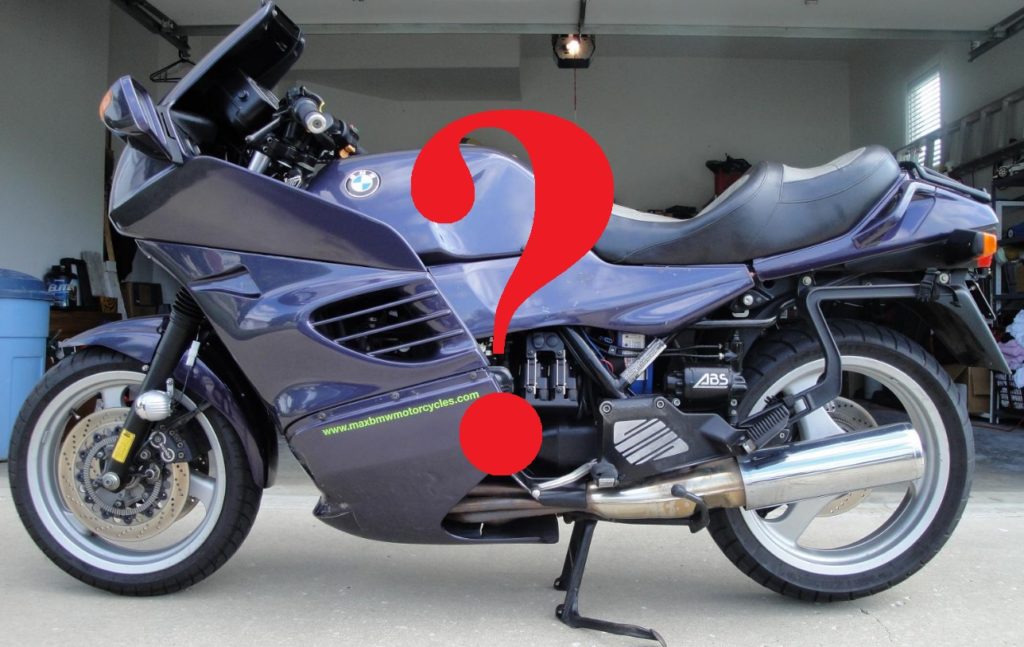
It’s a question as old as the pursuit of riding motorcycles itself. “What bike should I learn on?”
The resulting opinions are as numerous and diverse as the questions that triggered them. Sometimes, a specific bike is mentioned – typically of the lower displacement variety. Other times, the question is met with an adamant preach for taking a motorcycle rider training course. Both can be correct, but at the same time be met with their respective downsides.
Enrolling in a motorcycle rider training course is arguably the best and safest way to get started in motorcycling. Simply put, you pay a fixed amount and they will provide you with first hand riding experience on low-cc motorcycles while at the same time providing you with a book-load of riding safety tips. Upon its successful completion you will be typically granted your motorcycle driver’s license endorsement.

The problems that arise when considering this method are scheduling and confidence. The classes, at least in my area, are three days and are offered Thursday through Saturday. It runs around $200 and spots fill up quickly. If you’re working a full-time job, it can be hard to justify taking a couple of days off for this. Confidence plays another big role in taking the class. Going in without any previous experience of riding a motorcycle can really get the nerves going. The thought of jumping in the saddle for the first time in front of all of your classmates turns many people away.
It is possible to overcome these preliminary nerves by getting some first-hand riding experience before you take the class. If you’re lucky, you know of a friend who has a light, small-displacement machine with battle scars that they would gladly “teach” you on. By this, I mean learning clutch engagement in a wide open parking lot. Of course, in a perfect world, you would do this with full riding gear to protect yourself from the inevitable low-speed tip over when you lose your balance due to killing the engine by letting the clutch out too fast. Unfortunately, back here in the real world, this isn’t always an available option.
The solution to this problem may be more accessible than you think; your quest to learn to ride might not actually involve a motorcycle after all. The key to motorcycling mastery may just start with:
A Vespa.
A Vespa? Yes –an old, beat up, Vespa.
The word Vespa has become as analogous to scooters as Kleenex has become to tissues. While this relationship may be more fitting for the modern Vespas that you see around, it certainly shouldn’t be applied so haphazardly to the older stuff. By that, I mean pre-1981 (USA market) models of the iconic Italian machines. We’re talking the cutesy, brightly colored, small framed, 50cc-of-two-stroke-fury wonder bikes.
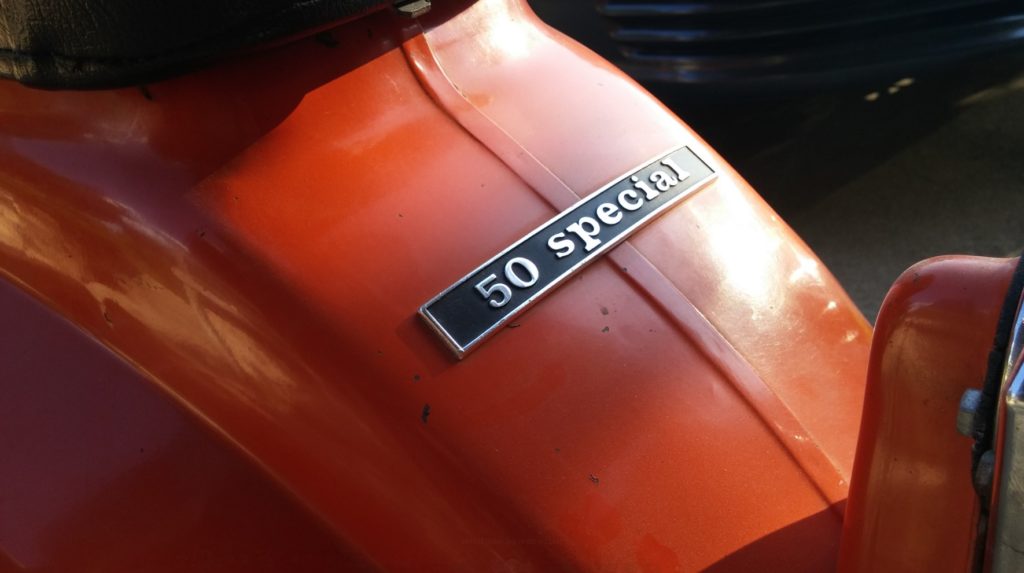
Many people inside of the USA are not aware that these little machines are more closely related to a motorcycle than a scooter. You see, modern scooters are the automatics of the two-wheeled world. They utilize CVT-style transmissions that allow the most clueless of riders to take the helm. The braking systems are set up just like a bicycle, where each handlebar lever operates the front or rear brakes. It is simplicity in a complete package. This is not what actual motorcycle riding is like.
On the other hand, older Vespas have hand-operated clutches just like a motorcycle. They have four speed manual transmissions just like a motorcycle. They have a hand operated front brake and a foot operated rear brake, just like a motorcycle. They require a medium of skill to operate, just like a motorcycle. They are extremely light, forgiving, small and not intimidating – unlike a motorcycle. On paper, it starts to shape up as an excellent starter bike. But how would I know?
The Hunt
On our second date, I took my girlfriend out for a motorcycle ride. I had determined she displayed a genuine interest in motorcycles so our dating could continue. At the time I had a 2003 GSX-R 1000 (that I still wish I hadn’t sold), which is such a polarizing bike that when ridden as a passenger, will either make you hate the thought motorcycling all together, or turn you into a bike nut for the rest of time. She fell into the latter group. It wasn’t long before the inevitable happened. “I want to learn how to ride!”
Well, crap.
There wasn’t a bike in the stable that would be a good instructing tool – they were all of the liter bike variety. It had been years since the last time I had a small-ish bike. We talked about her enrolling in a motorcycle riding class, but alas, her schedule wouldn’t permit it at the time. So began the search for something with two wheels that was cheap, humble and indestructible. It wasn’t but three days when the perfect teaching companion came forth; an orange, slightly battered, non-running 1979 Vespa 50 Special.
It was a one-owner-since-new Italian gem that came with all records and manuals. With only 1700 miles on the clock, it was exactly the sort of machine that you want to buy. It had been a few years since it had last ran but the engine turned over. The pressed-steel body work was scratched and dented but I felt it attributed to the little bike’s charm. The battery was flat and so were the tires – a test ride was not in the cards. Then there was the price – $700. A decent price if it were running, a bit steep if not. I offered $400 but the seller turned it down. I really wanted the little guy but I had to be realistic about the purchase. As I headed back to the car, the owner had a change of heart. He knew it was going to a good home. With the exchange of four large bills, I loaded the lightweight into the back of the 4Runner and headed home.

Simply getting the bike running was objective number one. As it turns out, it didn’t need much. After installing a new 6 volt battery, changing the transmission oil and filling it up with a fresh tank of premix gasoline, it started right up. However, plenty of work needed to be performed before I would trust it in the hands of my girlfriend.
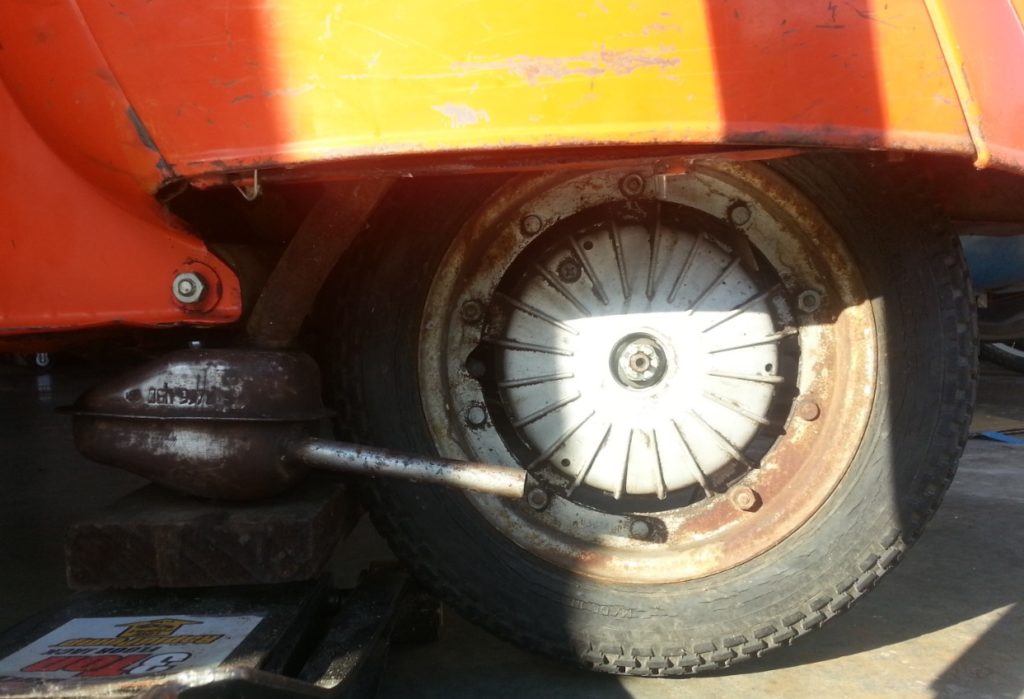
On went new white-walls and tubes to replace the original hard and cracked tires. I took the opportunity with the wheels off to scuff the brake pads and drums and lubricate the hinges and cables. While there, I repainted the wheels and replaced all of the wheel hardware.
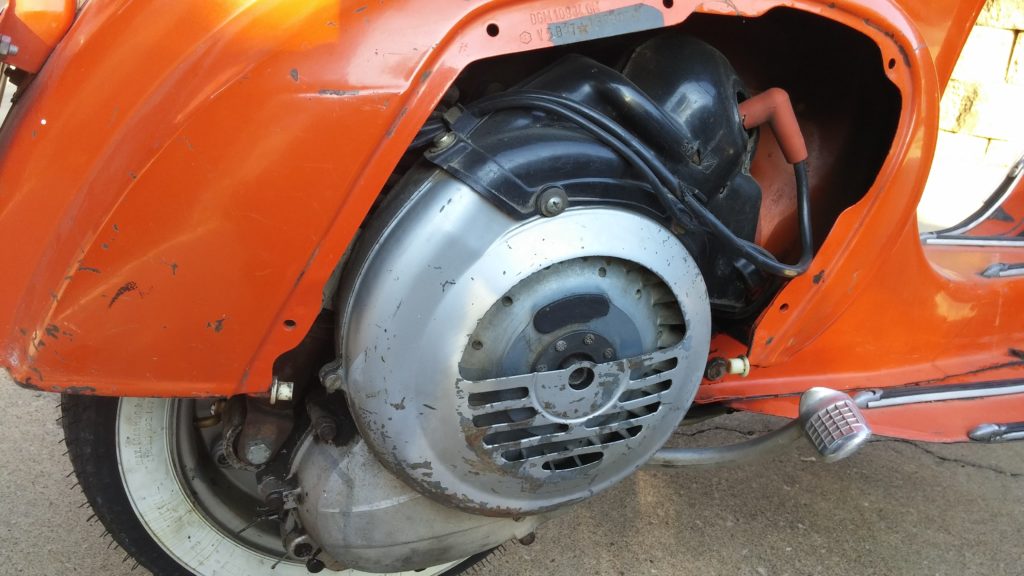
Most of the electrical system wasn’t operational; the headlight worked but that was about it. I replaced all bulbs with new 6 volt units, which, by the way, you probably won’t find locally. I had to visit Ebay to source them. The brake light wasn’t working but it turned out the handlebar brake switch was out of adjustment – an easy and free fix. The front shock wasn’t doing much in the way of damping so that was switched out for new. After a good amount of cleaning, the little Vespa was ready for its first go-around of the block.
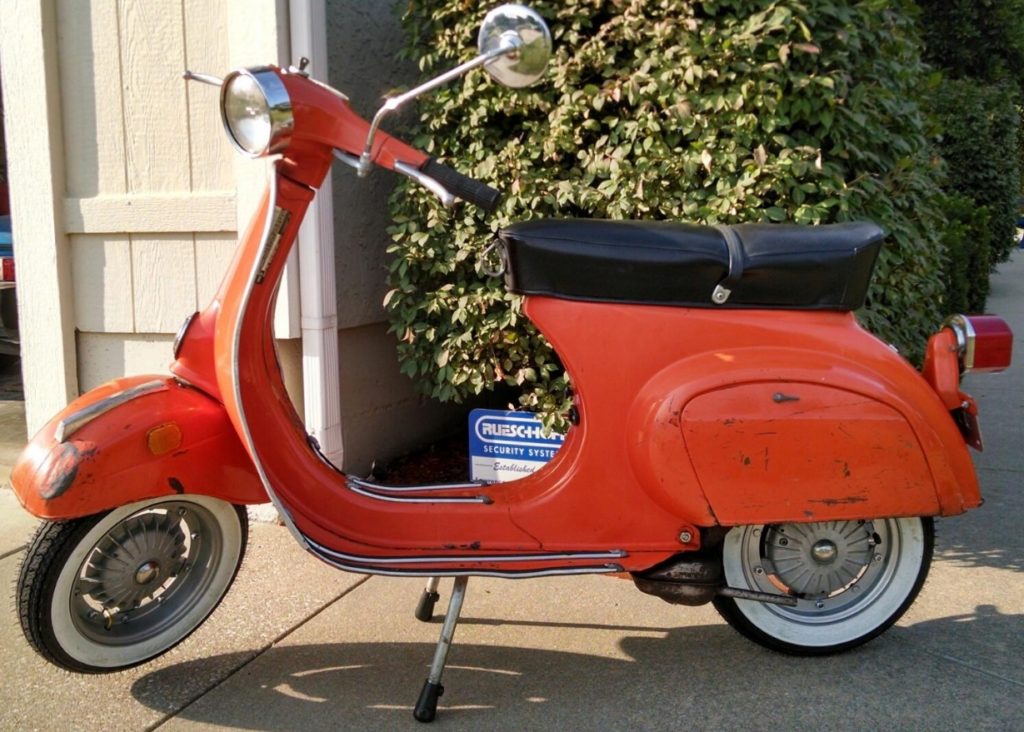
I have never ridden a more cheerful machine. In terms of fun, it puts larger machines to shame. What other bike can you crack the throttle wide open, run through all the gears, and still not approach the speed limit? Not many that I know of. Burnouts and wheelies are not in this bike’s future – at least in stock form. The antiquated brakes and suspension certainly take some getting used to, but are adequate for this size of bike. The seat height allows for the shortest of riders to firmly plan both feet on the ground while at a stop. It is amazingly easy to ride and the clutch is very forgiving – exactly what I was hoping for. The little motorino was ready for its first day of school.
Old School
While the little bike was ready, its student wasn’t. Event with a small unsuspecting machine like this, you still need to give a few pointers as to what all the levers and buttons do. After about 30 minutes of instrument and mechanical systems familiarization, I felt that my girlfriend was ready to hit the road. I hoped not literally.
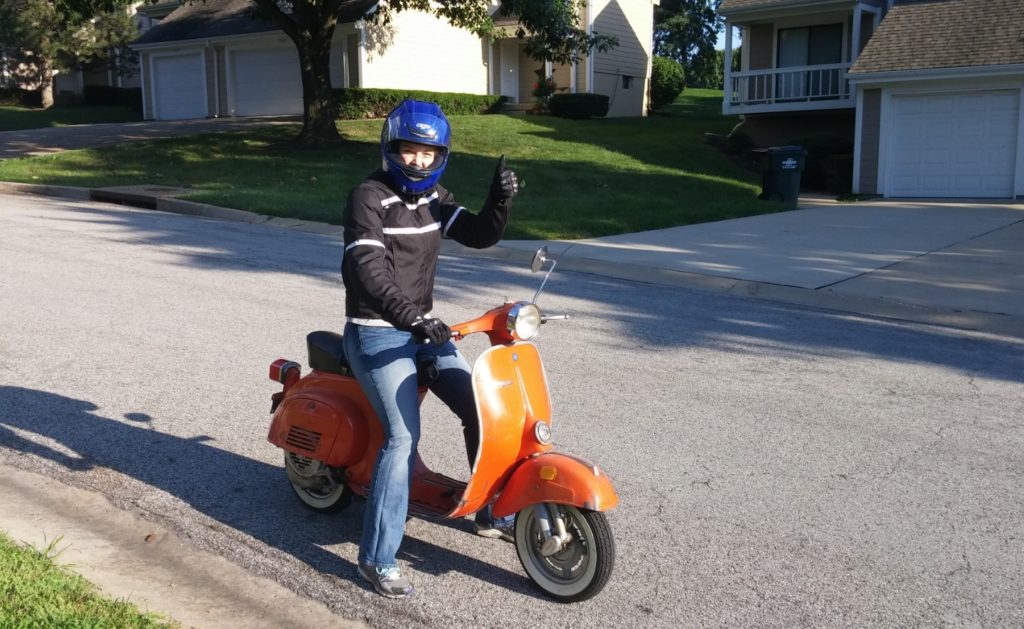
When learning to ride a motorcycle, the first obstacle to overcome is clutch engagement. This can be quite a difficult thing to master properly on a full-sized bike. But on a Vespa? Piece of cake! After about 10 linear stops and starts she had it down. While she is a quick learner, I would have to attribute some this to the Vespa’s light and forgiving clutch. You hardly have to mix any throttle in while letting the clutch out. Literally, the bike is so light that if you were to just let the clutch out all by itself, the engine would not die – it would just start off with or without you at a leisurely walking pace.
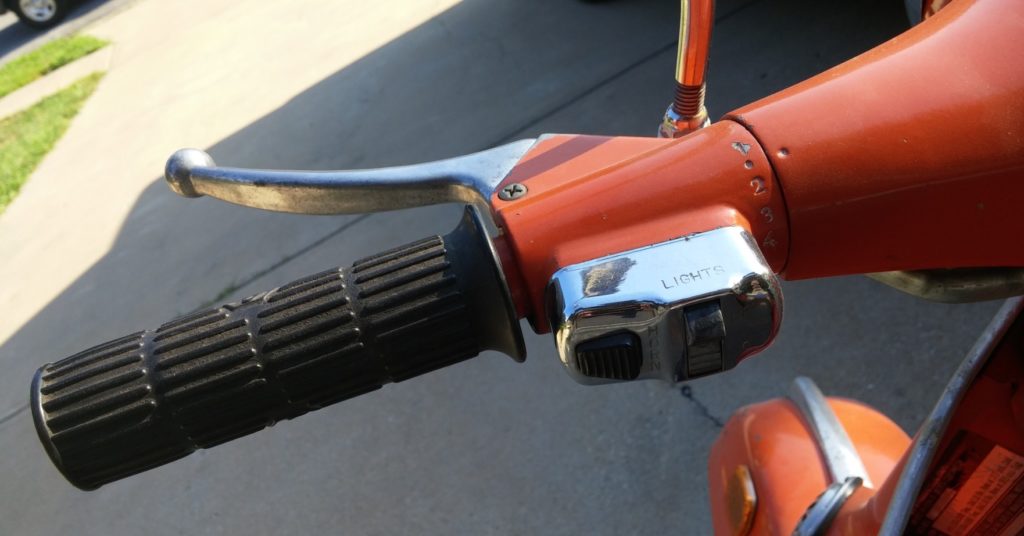
From here we proceeded to learn about stopping, utilizing the front and rear brakes independently. If you can figure out how to brake effectively on this, you’ll be a braking master on any other bike. The old drum brakes do not lead themselves to smooth operation. Next up was learning to shift gears. Vespas have an interesting and unique shifting mechanism. Instead of shifting with your foot like on a motorcycle, a Vespa requires you to rotate the left handlebar to select your next gear; think Wal-Mart 18 speed bicycle. Pull in the clutch, rotate the wrist, chunk, and there you go – you’ve found the gateway to 28 MPH.

She was really starting to get the hang of this little bike. I started to teach her how to negotiate turns and before I knew it, she was doing figure eights! It might not sound like much, but if you’ve never before ridden anything self-propelled with two wheels, it’s an exciting and life changing event. You start the day as a nervous wreck and you end it feeling like a pro. She was hooked. The Vespa even came away with a name at the end of the day – “Orangey.” How original!
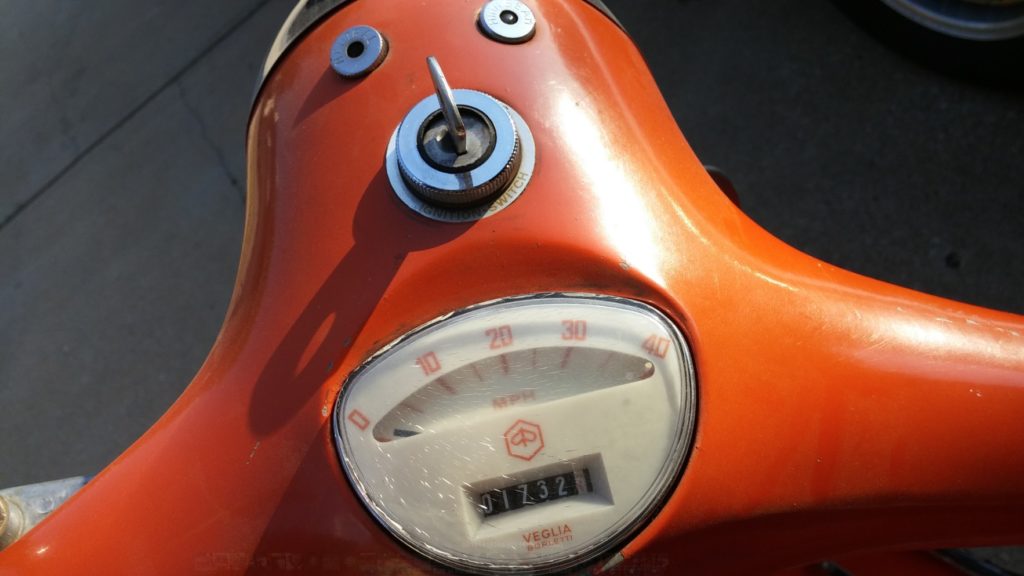
Friend for Life
The now aptly named Orangey had just transformed my girlfriend from a motorcycle passenger to a motorcycle rider-in-training. Sure, there was still plenty for her to learn about riding than could be possibly learned in one day on a Vespa. However, the foundation for riding technique had been laid. Not only had my girlfriend’s desire to ride a motorcycle been realized, she now had the confidence to take on the riding class.
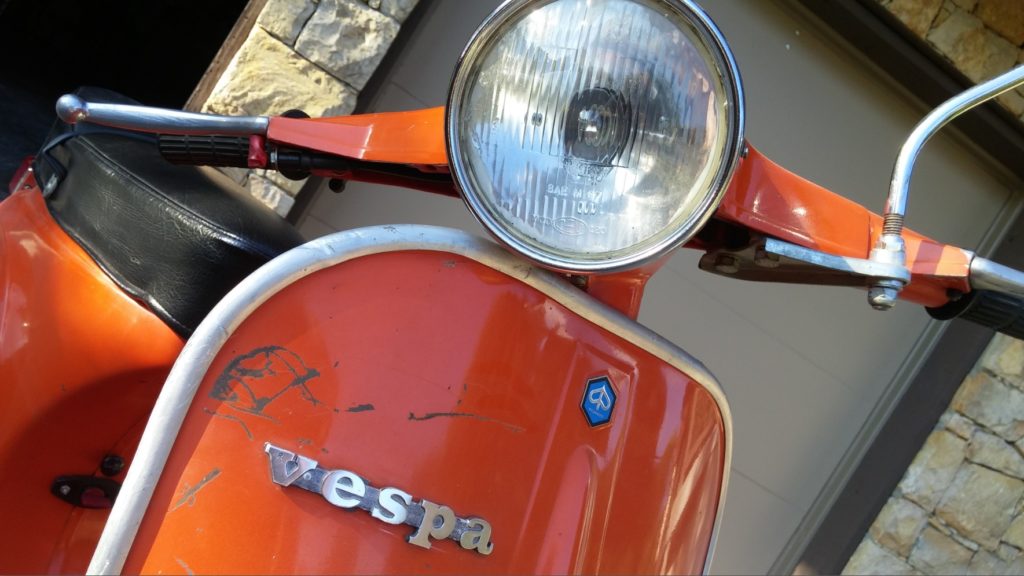
Learning to ride can be a confusing and expensive proposition. All of the opinions out there expressing how to learn properly can only add to the conundrum. This story was not meant to dissuade anyone from taking a motorcycle riding training course – quite the opposite in fact. It was meant to bring to light a solution that can solve many a would-be rider’s dilemma: Building confidence without expectations or commitments. A little Vespa can pay dividends in terms of laying a solid foundation for riding. Over time you may outgrow its mechanical limitations, but you’ll never outgrow its charm. You’ll come to realize that sometimes, the best motorcycle to learn on isn’t a motorcycle at all.

Leave a Reply